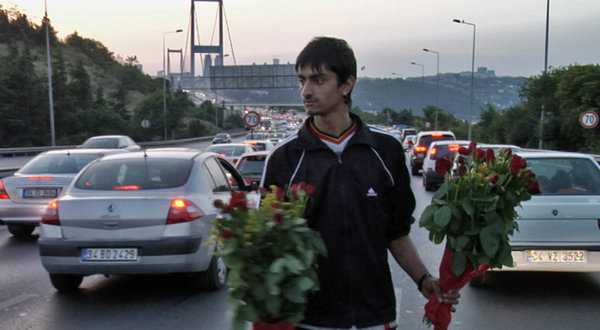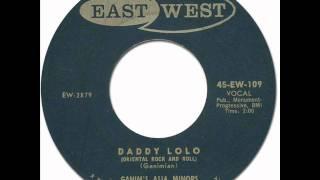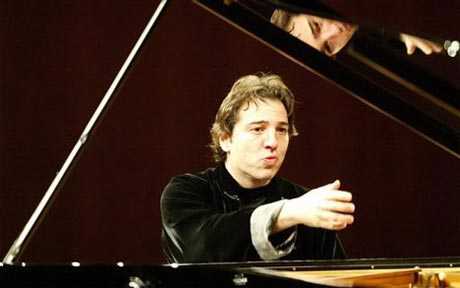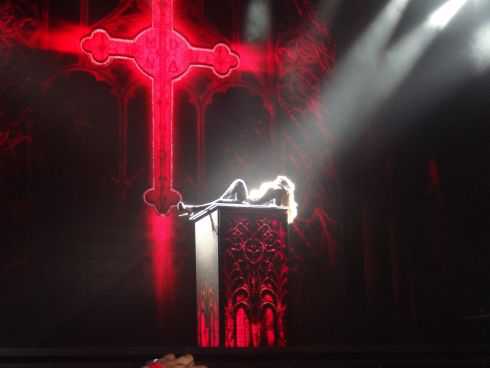Istancool
LET’S TALK TURKEY
More Sharing ServicesShare | Share on email Share on facebook Share on twitter Share on google_plusone
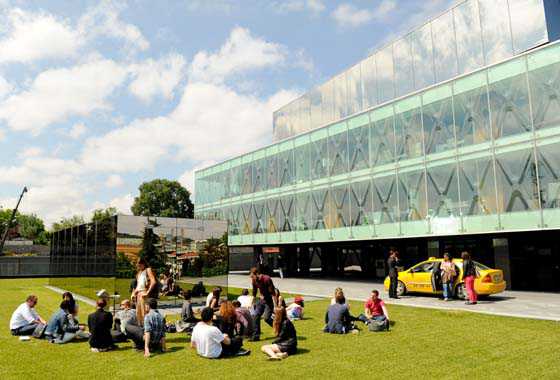
Vakko HQ building
Istancool, also known as the Istanbul International Arts and Culture Festival, is a packed powerhouse of a long weekend that also serves as the perfect introduction to what is arguably the hottest city on the current global art scene.
Istanbul really does seem to have it all: a sophisticated and much traveled bourgeoisie, a small but very powerful group of collectors, a growing number of highly respected young artists, local museums and independent spaces, its own glossy magazines and unbelievably low rents. All in all, the city is a sort of “Berlin on the Bosporus” with the added advantage of being beautiful.
Thus, it’s hardly surprising that galleries such as Lehmann Maupin and Paul Kasmin have launched satellite shows in this city, that Sotheby’s established a series of successful auctions of modern Turkish art in 2009, that the place is packed with creative exiles living on the cheap, or indeed that the artist Burhan Dogançay (b. 1929), having made Manhattan his base back in 1964, returned home to open his own one-person museum in 2004.
And now it was recently announced that the Museum of Modern Art, MoMA PS1, and the Istanbul Museum of Modern Art have forged a new partnership to expand the Young Architects Program to Turkey. As Barry Bergdoll of MoMA put it, “The vibrancy of the architecture and design worlds in Turkey demands attention both locally and internationally.”
Oya Eczacibas, chair of the board of Istanbul Modern, expressed her delight in signing the agreement with MoMA, describing her museum as being “committed to sharing Turkey’s artistic creativity with wide audiences and promoting its cultural identity in the international art world.” This could equally serve as a description of Istancool, if you also added teams of hipsters being jetted in from every corner of that pan-international Planet Chic.
For Istancool is, as its name might suggest, definitively modish, putting the most fashionable contemporary art together with equally high-end fashion, style, design, photography, film, music and even club culture.
Istancool also represents another micro-trend, that of the single-owner cultural festival belonging to one individual. Today it is no longer enough to have your own private art space or family gallery, what you really need is to host your own personal biennale. Thus it was that swimming pool and department store-heir James Moores originally launched his own Liverpool Biennale in 1998, Vanessa Branson founded her own Marrakech Biennale and Dasha Zhukova can organize regular cultural meetings in Moscow.
Likewise Istancool essentially belongs to one very attractive and dynamic couple, Demet Muftuoglu Eseli and her infamously handsome husband Alphan. (At last year’s Istancool a misinformed Courtney Love kept assuring Demet “I’m going to have to f*ck your brother” until she was told of their actual relationship.)
Demet is creative consultant to Vakko, a huge and highly prosperous fashion company that is twinned with the country’s most successful radio and TV group, Power, and this is presumably where all the funding for this lavish and glamorous cultural fiesta comes from.
Based around a series of panels, exhibitions and events, Istancool veers between the academic, with a Turkish interviewer actually quoting Jacques Lacan, and the actively hedonistic, as evinced in a night-long riverside party hosted by New York’s Boom Boom Room.
Previous participants have included everyone from Sophie Calle and Sam Taylor-Wood to Dan Colen and Ryan McGinley, and this third edition had managed to rally an equally impressive roster of visitors to take part in the two-days of PowerPoint discussions.
Of these the star was probably Robin Rhode, newly represented by Lehmann Maupin, which has made him a major figure in Istanbul, where he had a show opening at the space Istanbul 74, which is also associated with the festival and indeed Vakko.
This exhibition nicely demonstrated the dexterity of his oeuvre, that admixture of drawing, photography and film that so deftly mixes whimsy with social conscience.
The other star was Pinar Yolacan, an artist whose CV absolutely encapsulates the new Istanbul scene, for though an ostensibly “Turkish” artist Yolacan studied fashion at St. Martin’s in London before going on to do fine art at Cooper Union in New York, where she still resides. Currently living in Istanbul, thanks to a prestigious teaching post, Yolacan is equally at home in either metropolis, seeing them as complimentary cultural centers, and her large-scale photographic works were as clearly appreciated by the Turkish audience as the weekending foreigners.
Indeed Jefferson Hack, editor of Dazed & Confused, who held a slideshow Q&A with Yolacan, rightly saw the parallels between her works and the increasingly Surreal tendencies of current fashion photography.
Yolacan was followed by a discussion between photographer Mario Sorrenti and his sometime editor Cecelia Dean, co-founder of Visionaire magazine, where the strong intersection between fashion and contemporary art was again made blatantly clear.
These talks were held in the incredibly new HQ of Vakko itself, a sort of vacuum-packed Deconstructivist “broken bundle of mirrors” (to pretentiously quote Ezra Pound) designed by REX architects of New York and recent winner of a Wallpaper award.
Here, the mixing, matching and mingling of all these various “visual regimes,” art, fashion, architecture, design, film, from the billboard advert to the museum atrium, from the computer monitor to the catwalk, from experimental laboratory to high-street store, was made abundantly clear. Thus Visionaire launched its latest edition, the largest magazine ever produced in the world, towering some 7 x 5 ft., an effort that was indistinguishable from a conceptual art installation.
Curiously enough, the most popular and packed event seemed to be a signing by Carine Roitfeld, the Paris-based former Vogue editor, of a vast book of her work, essentially up-market photocopies of her already published magazine pages, which despite its $150 price tag inspired a frenzy of fans. This event was held at the beautiful Vakko library, which as further proof of the civilized nature of the company has just opened itself to the public, so that anyone can come and visit the HQ and consult their groaning shelves.
The success of Roitfeld is surely an indication of our culture’s fascination with the relatively new role of the intermediary, the interpreter, in contrast to the originator or producer; her success as a “stylist” as opposed to actual clothes designer or photographer exactly paralleling the triumph of the curator over the artists themselves.
One of the most celebrated artists in attendance, New York whiz kid Aaron Young, was particularly revealing on the pressures of just such curatorial and market pressures, as when he was asked by his interviewer Chiara Clemente if he would ever give up his signature motorcycle paintings. “I don’t know if they will let me stop,” he admitted. “It’s a little out of my hands at the moment.” It was perhaps the most honest statement of the whole weekend.
Likewise another much-fêted downtown New Yorker, the eternally youthful Nate Lowman, made no bones about the importance of private collectors to his own esthetic, showing one of his earlier works, My First Check, a painting of a $3,000 money order from the Rubell family.
Part of the purpose of Istancool is precisely to bring over the latest hottest artists such as Young and Lowman in order to show their work to their Turkish equivalents and, perhaps more importantly, show them Istanbul and all its rich potential.
Thus this incubator as a sort of “first time” travel agent should not be underestimated, for nearly all the imported talent had never been to Istanbul before and swore they would be coming back, and as soon as possible.
These visitors included Marco Brambilla, the fabled movie director video artiste who was actually here in Istanbul because a local collector has just committed to hosting a show of his major works, and Kyle DeWoody (daughter of collector Beth) launching the first international version of her Grey Area art and fashion boutique from Broadway in New York.
The biggest bestseller of this said Grey Area, worn by everyone over the weekend, was blank fake Rolex watches designed by Shelter Serra, nephew of Richard, yet another family-name which along with Clemente and Cassavetes made clear that today’s celebrities are as dynastic as their royal predecessors.
Istancool bears witness to the breadth of vibrant creative activity that has taken over Istanbul in the last few years. Witness the global art wanderer and connoisseur of beauty Sam Samore, a new resident of the city, camped out at the bargain rate Hotel des Anglais, who provides a sort of ultimate, secret imprimatur of serious art world credibility. As Samore puts it, “Istanbul is absolutely the most important city to be living in at the moment, why would anyone be anywhere else?”
ADRIAN DANNATT is a Paris-based critic and writer.
